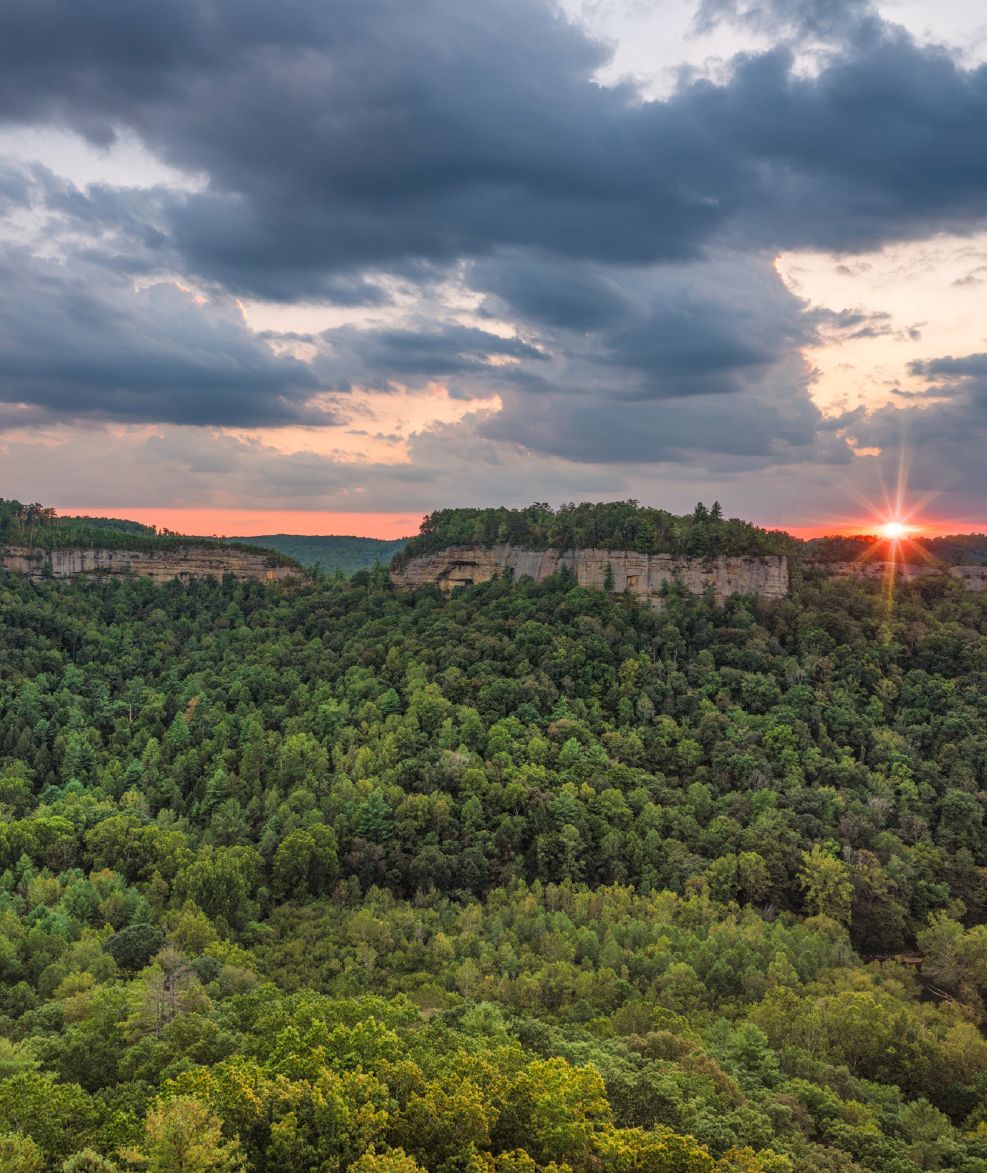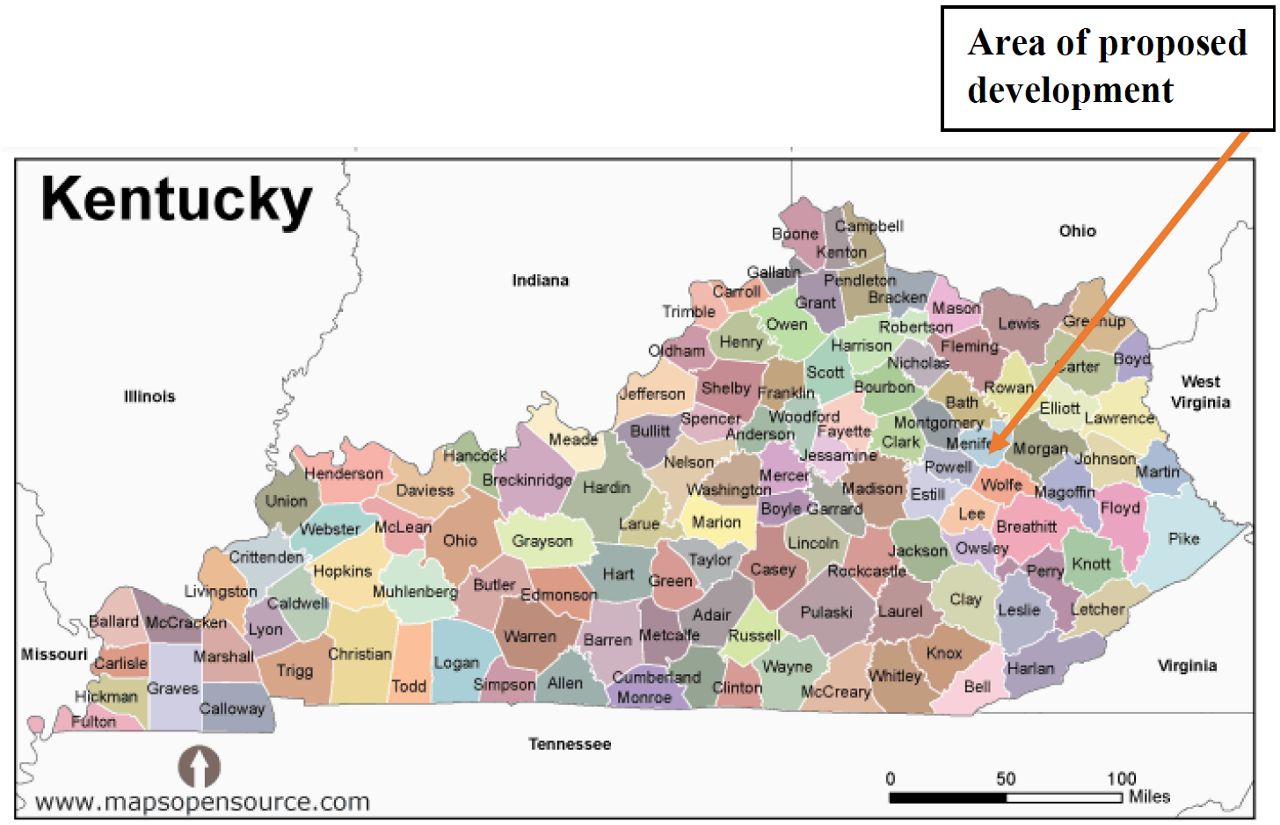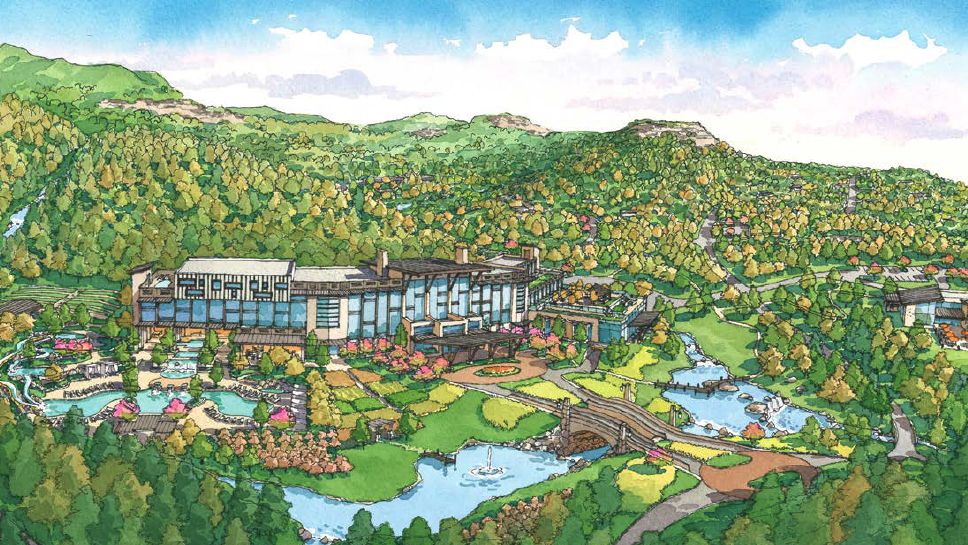LEXINGTON, Ky. – A community debate about the best way to attract tourists to the federally protected Red River Gorge Geological Area in eastern Kentucky after announcing a planned resort has seemingly lessened.
What You Need To Know
- Red River Gorge spans 42,000 acres in four Kentucky counties
- Planned resort has price tag of $135 million
- Community input and involvement has eased tensions between those for and against the development
- Nearly 900 acres of land purchased recently for project
Located on the eastern edge of the Daniel Boone National Forest, the 42,000-acre preserve spans four counties – Wolfe, Lee, Powell and Menifee – and has long been a destination for people seeking outdoor adventures, such as kayaking, hiking, rock-climbing and more. An Appalachian Regional Commission (ARC) report calling the Gorge the “Gateway to Eastern Kentucky” estimates thousands of climbers visit the gorge’s more than 100 natural arches and 900 miles of sandstone cliffs annually, generating a $3.6 million infusion into the regional economy.
The planned resort is needed to boost the number of tourists and the revenue they bring to the area. The ARC calls the Gorge “undercapitalized” and specifically noting the lack of overnight accommodations. Red River Economic Development LLC (RRED) in September 2020 released a master plan and feasibility study to analyze national and state tourism trends and evaluate a series of potential tourism development concepts for the gorge area to create jobs and stimulate the local economy.
Wolfe County Tourism Director Christie Abrams said a lot of the early opposition to the project resulted from the announcement’s timing. Still, as time went on and people learned more about the project, a lot of the opposition waned, including hers.
“The unique situation with this project is what actually brought it to the public’s attention way ahead of when these types of projects normally are,” she said. “A lot of folks thought that because the grant funding was made available, the project itself was further down the pipeline than it actually was. When the project was first announced, there were a lot of folks that were pretty upset – I was one of them – that we didn't have all of the information. We had information, but it wasn't all the information, and it wasn't exactly accurate. We had seen some studies and some surveys, and in some of that was full-on data that was actually verifiable.”
The 10-year master plan focuses on these main areas:
- Investing in economic development in the gorge’s town
- Diversifying attractions
- Maintaining regional trails
- Developing a comprehensive branding and marketing strategy
Anchoring these efforts are plans for the full-service Leadership in Energy and Environmental Design (LEED)-certified resort complex offering lodging, conference facilities, adventure hubs, trail access, and other amenities to serve visitors. Once completed, the project is anticipated to create more than 500 jobs.
Projections also include attracting more than 500,000 visitors, generating more than $18 million in wages, and more than $79 million of local economic impact annually.

“Right now, the gorge attracts about 75,000 visitors a year, and those people hit an income range,” Abrams said. “I know they are in that range because I know that we've got properties in the area that rent for $400 or $500 a night, and they don't have nearly as high of an occupancy rating as those that run between that $200 and $300 range. I know just from common sense that the more money you make, the more vacations you take in a year.
"The thought with this resort is the people out there that are actually spending the most money don't want to come to a rustic, old cabin. They want the adventure of a rustic old cabin, but they want that rustic old cabin to have wi-fi, a heated pool out back, and maybe somebody to cook for them. We don't have that space here in this area. There’s not anywhere you can come to the gorge and get that champagne taste, and that's what this resort is hoping to attract are all of those folks that go on vacations that spend all of those big dollars. Still, the truth is most of these people will never find their way out into the gorge because they're not adventurers; they’re vacationers who want an adventure.”
The RRED master plan highlighted the $135 million luxury resort, located about a mile outside the gorge, with a 170-room lodge, wedding venues, restaurants, a spa and a micro-distillery. The gorge’s business community has mixed views about the plan. Some see the benefit of the resort, and others support growth on a smaller scale that protects the area’s culture and ecology.
Tension among the community stemming from gorge-related development has happened before. After the Red River flooded in 1962, the Army Corps of Engineers proposed a dam that would aid in flood control and turn a portion of the gorge into a recreational lake. The project was nixed after protests, but the Red River became the only federally protected wild and scenic river in Kentucky.
Resistance to the resort was being spearheaded by the citizen group Red River Gorge United (RRGU). The group started an online petition titled "Save the Red." Its president, Kristen Wiley, also worked with the University of Kentucky to survey nearly 500 residents and visitors who expressed concern about the resort.
RRGU is not actively opposing the resort, but instead, works to ensure its members have input in its development. The master plan now includes ecologically aware guidelines, such as prohibiting construction within 200 feet of cliffs, protecting natural arches from rock blasting, and adopting green-building practices such as creating a Dark Sky Park. The master plan projects the resort will create 300 new jobs and $18 million in annual labor income in an area where the poverty rate is high, and jobs are needed.

RRED announced this past March the $2.25 million purchase of 891 acres of private land from Ian Teal for the proposed resort, but a developer has not been secured.
The resort could hamper what Wiley calls “unplanned growth,” adding the lack of zoning regulations allows the area’s “very independent” residents to do whatever they want with their property.
“People who don’t want a lot of government oversight,” Wiley said. “We’re trying to come up with ways there can be oversight without trying to control what someone does in their backyard.”
The gorge’s popularity skyrocketed during the COVID-19 pandemic as visitors reverted to the outdoors as an inexpensive escape from the doldrums of lockdowns and other restrictions. But those tourists overwhelmed the state forest’s infrastructure with crowded trails, traffic jams, and a struggling trash-collection service. Officials announced in late 2020 an effort to seek new environmental protections for the gorge.
An influx of people participating in outdoor activities also means a likely increase in the number of injuries sustained in the gorge, which Wolfe County Search and Rescue Chief John May said is already happening.
“I've been playing in the Red River Gorge pretty much my entire adult life, so I've seen the changes, some good, some not so good,” May said. “We've seen a dramatic increase in the number of visitors already. We also had a steady uptick in the number of rescues we conducted last year, and I can't say all those are out-of-towners. I think people in Kentucky come here more than they used to, which is represented in the number of rescues that we conduct on people not necessarily from up north. Still, a big percentage are from up north.”
May said there is a concern from a search-and-rescue perspective about a resort bringing more people, many inexperienced in outdoor activities, to the gorge.
“We're all volunteers, and we are busy the way it is,” he said. “I think we’re at 33 or 34 rescues already this year, and we're just halfway through the season.”
Powell County Tourism Director Miranda Fallen said she had been involved in discussions about the resort since they began and has been very opinionated and vocal with her thoughts.
“When I got involved in this, there were a lot of things I felt like our area could thrive upon,” she said. “The potential for growth from an all-new spectrum of people is the most appealing part from a tourism perspective. From a local perspective, you're talking about a four-and-a-half-star resort that would potentially bring in an all new spectrum of people. On the proposed property, you have exclusivity to arches and things you don't have access to now – it is not part of the Red River Gorge. One of my complaints about everything is that everybody hears ‘resort’ and ‘Red River Gorge,’ and it makes it sound like we're going to put a monorail through the Nada tunnel to get to it.”
The purpose of tourism, Fallen said, is to create growth.
“That's what we're here to do is to grow,” she said. “I know a lot of the opposition has said they just want a seat at the table; we just want to be able to control this growth. What I think we have all found is a middle ground. Everybody says we don't want it to be a Gatlinburg, but my thing is we don't want it to be a Gatlinburg. There already is a Gatlinburg. We want to be our own, and we want to continue to advance on those good things. You've already got people from all over the world that come here. So, let's build on that.”



